
5 “Healthy” Foods That Were Sabotaging My Weight Loss (And What I Eat Instead)
Share
Are you eating “healthy” foods that are working against your weight loss goals? I was shocked to discover that five foods I considered staples of my clean eating routine were secretly sabotaging my progress.
After making these simple swaps, I lost 5kg and finally broke through my weight loss plateau. In this comprehensive guide, I’ll share the exact food swaps that transformed my body and my relationship with food.
These aren’t extreme changes or restrictive eliminations — they’re smart, sustainable switches that will help you reach your goals faster while still enjoying delicious, satisfying meals.
Watch my full video breakdown of these game-changing swaps:
The Problem with “Healthy” Food Marketing
The health food industry is worth billions of dollars, and unfortunately, not all products marketed as “healthy” actually support your wellness goals. Many foods that appear nutritious on the surface are loaded with hidden calories, processed ingredients, and blood sugar-spiking compounds that can stall your progress.
During my own weight loss journey, I spent months wondering why I wasn’t seeing results despite eating what I thought was a clean, healthy diet. It wasn’t until I started examining the nutritional content of my go-to “healthy” foods that I realized the problem wasn’t my willpower — it was my food choices.
The five swaps I’m about to share with you aren’t just theoretical recommendations. These are the exact changes I made to my daily eating routine that helped me lose 5kg and maintain my results long-term. Each swap is designed to:
- Reduce unnecessary calories without sacrificing satisfaction
- Improve nutrient density
- Stabilize blood sugar levels
- Support sustainable weight loss
- Enhance overall health and energy
Swap 1: Granola → Greek Yogurt with Fresh Berries
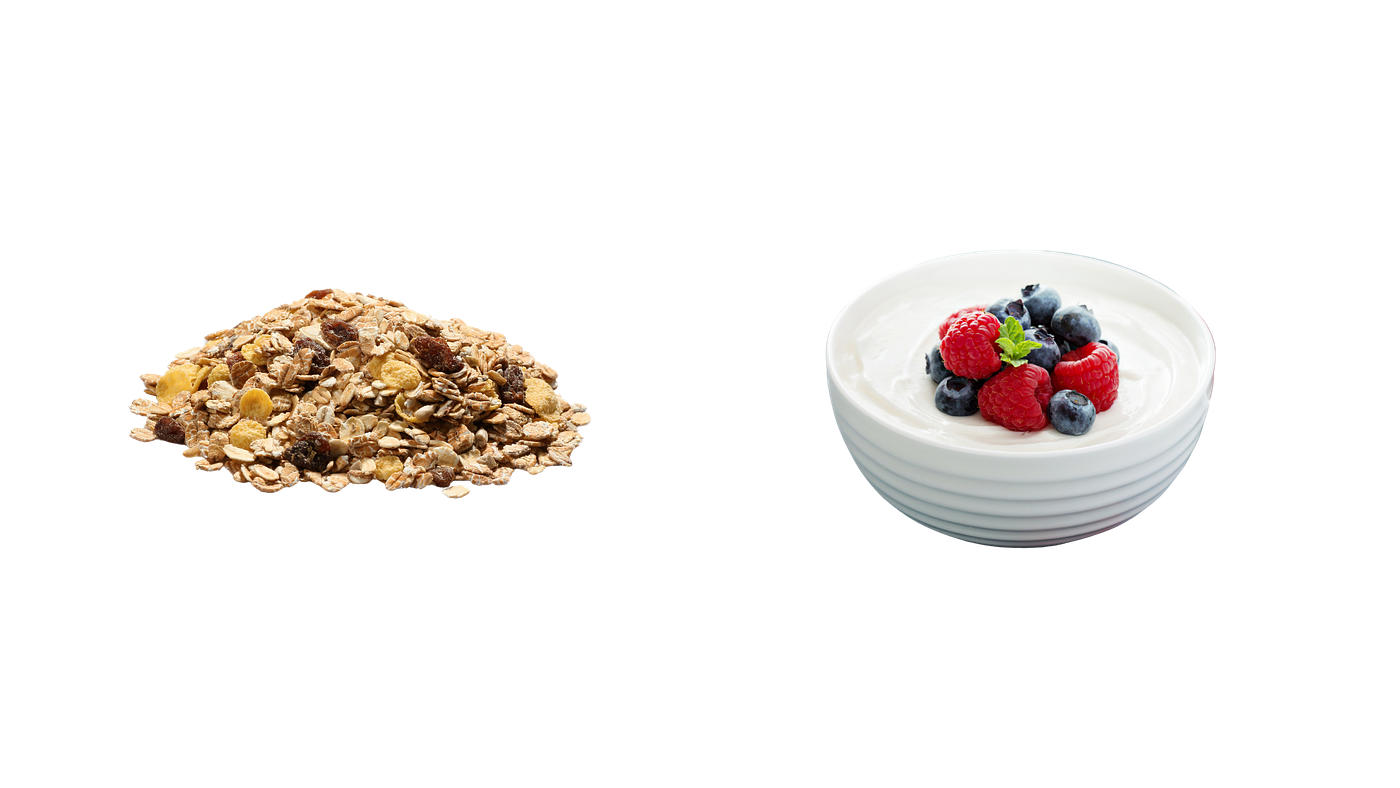
The Problem with Granola
Granola was my go-to breakfast for years. It seemed like the perfect healthy choice — whole grains, nuts, and dried fruit all in one convenient package.
However, when I finally checked the nutrition label, I was shocked to discover that my typical serving contained over 400 calories, 15 grams of sugar, and very little protein.
Most commercial granolas are essentially candy disguised as health food. They’re loaded with added sugars, oils, and processed ingredients that spike your blood sugar and leave you hungry within hours.
Even the “healthy” versions from health food stores often contain 300–400 calories per serving — and let’s be honest, most of us eat more than the tiny serving size listed on the package.
The Solution: Greek Yogurt with Fresh Berries
My game-changing swap was replacing granola with plain Greek yogurt topped with fresh berries. This simple change cut my breakfast calories in half while tripling my protein intake. Here’s the nutritional comparison:
- Granola (1/2 cup): 400+ calories, 4g protein, 15g sugar
- Greek yogurt with berries (1 cup yogurt + 1/2 cup berries): 150 calories, 20g protein, 8g natural sugar
The high protein content of Greek yogurt keeps me satisfied for hours, while the natural sugars in fresh berries provide sweetness without the blood sugar crash. The probiotics in yogurt also support digestive health, and the antioxidants in berries provide anti-inflammatory benefits.
Pro tip: If you miss the crunch of granola, add a tablespoon of chopped nuts or seeds for healthy fats and texture without the excess calories.
Swap 2: Fruit Juice → Whole Fruit with Water

The Fruit Juice Trap
Even 100% natural fruit juice was a regular part of my morning routine. It seemed like an easy way to get vitamins and start the day with something healthy. However, fruit juice — even the “natural” kind — is essentially liquid sugar that spikes your blood sugar faster than a candy bar.
When fruit is juiced, all the fiber is removed, leaving behind concentrated fructose that your body processes similarly to refined sugar. A single glass of orange juice contains the sugar equivalent of 4–5 whole oranges, but without any of the fiber that would normally slow sugar absorption and promote satiety.
The Whole Fruit Solution
Instead of drinking my fruit, I started eating it whole and drinking water separately. This simple change provided numerous benefits:
- Fiber intake: Whole fruits contain fiber that slows sugar absorption and promotes feelings of fullness
- Portion control: It’s much harder to over consume whole fruits compared to juice
- Hydration: Drinking water separately ensures proper hydration without excess calories
- Blood sugar stability: The fiber in whole fruit prevents the blood sugar spikes associated with juice
For example, one medium apple contains about 95 calories and 4 grams of fiber, while a glass of apple juice contains 110 calories and zero fiber. The whole apple will keep you satisfied longer and provide sustained energy without the crash.
Swap 3: Rice Cakes → Cucumber Slices
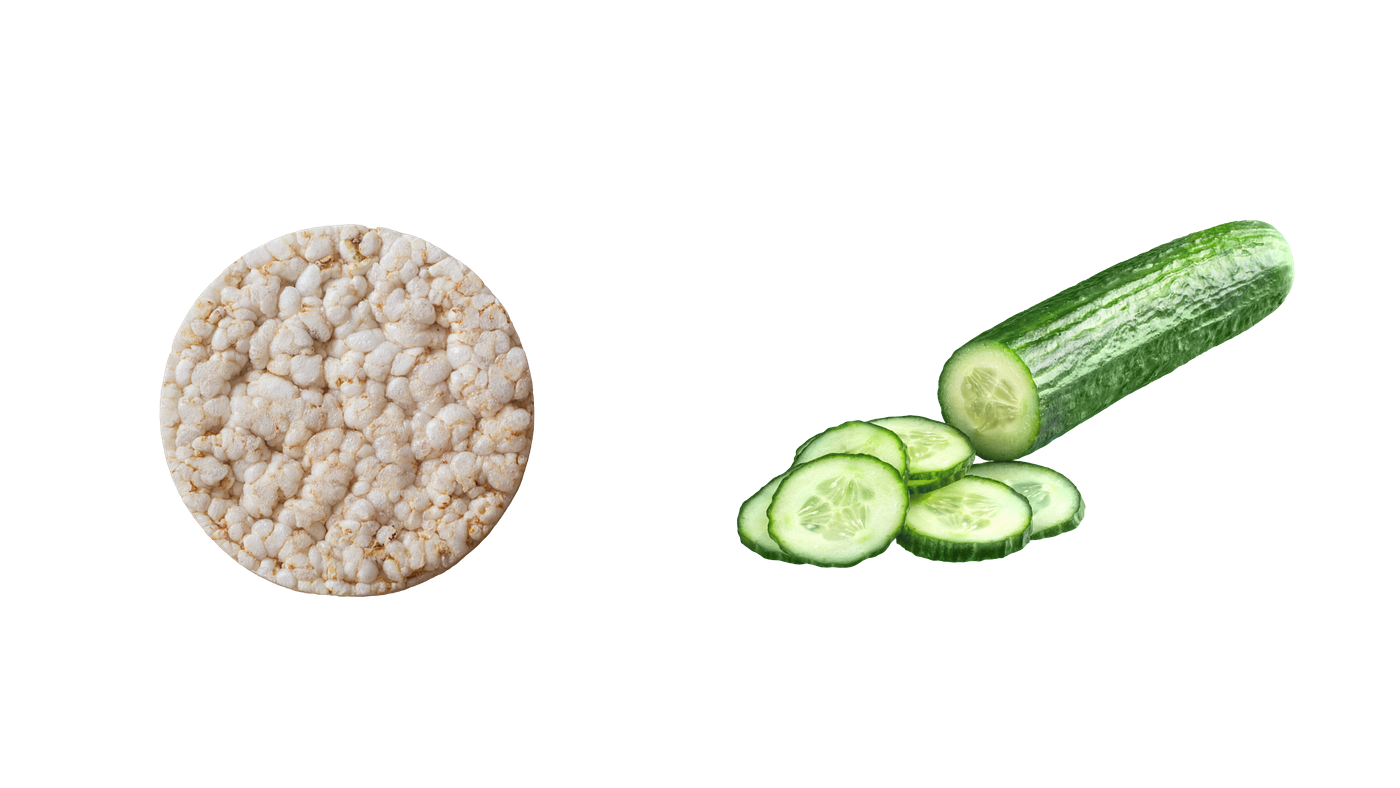
The Rice Cake Illusion
Rice cakes seemed like the perfect low-calorie snack option. They’re marketed as a healthy alternative to chips or crackers, and at only 35 calories per cake, they appeared to fit perfectly into my weight loss plan.
However, rice cakes are essentially empty calories — they provide no meaningful nutrition and have a high glycemic index that can spike blood sugar.
Rice cakes are made from puffed rice, which is a highly processed grain that your body converts to glucose almost immediately. They contain virtually no protein, healthy fats, or fiber, which means they don’t provide satiety or sustained energy.
Most people end up eating multiple rice cakes to feel satisfied, negating any caloric benefit.
The Cucumber Upgrade
Replacing rice cakes with cucumber slices was one of the most satisfying swaps I made. Cucumbers provide the same satisfying crunch with significantly more nutritional value:
- Hydration: Cucumbers are 96% water, contributing to daily hydration needs
- Nutrients: They contain vitamin K, potassium, and antioxidants
- Volume: You can eat a large volume for very few calories
- Versatility: They pair well with hummus, nut butter, or can be seasoned with herbs and spices
A whole cucumber contains only about 16 calories but provides fiber, vitamins, and minerals that support overall health. The high water content also helps with hydration and can contribute to feelings of fullness.
Swap 4: Protein Bars → Hard-Boiled Eggs
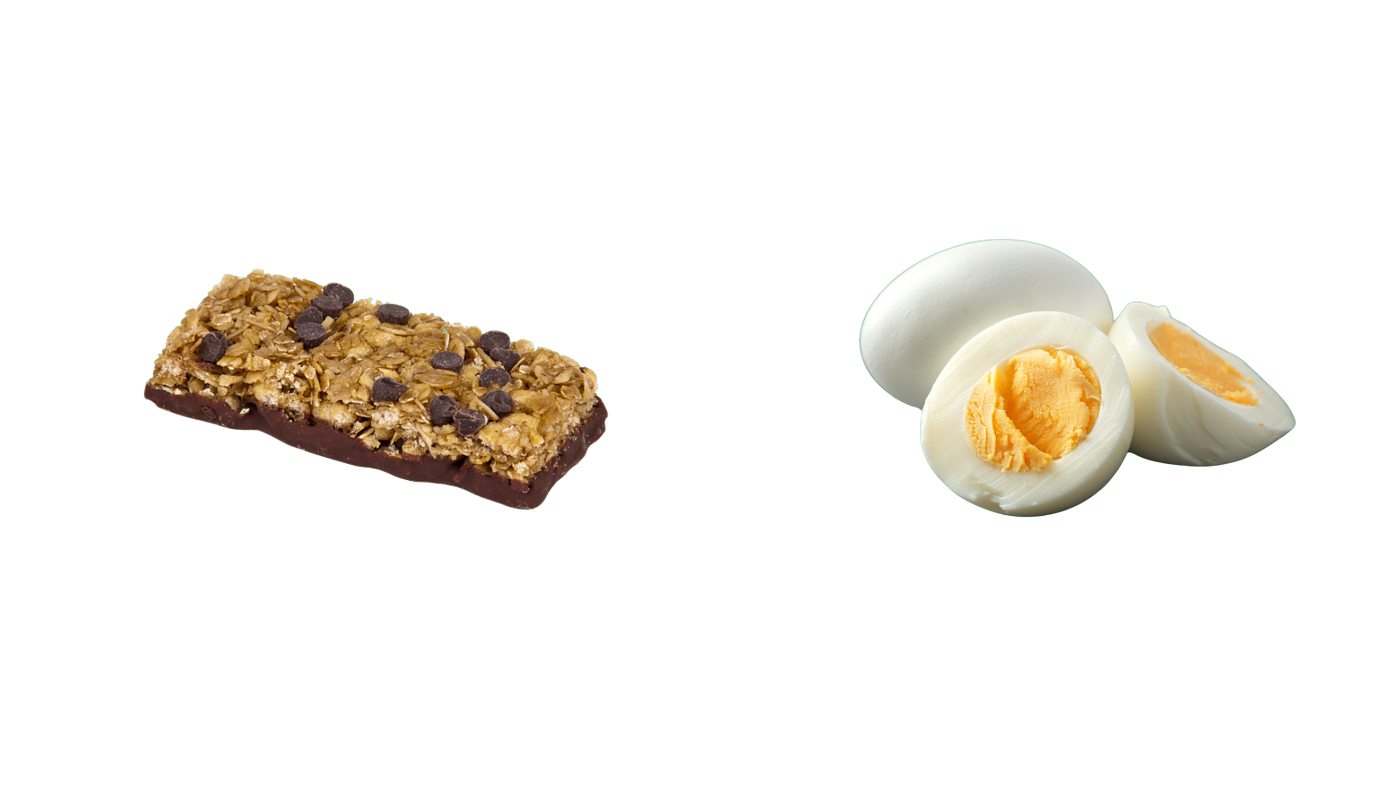
The Protein Bar Problem
Protein bars were my go-to post-workout snack and afternoon pick-me-up. They seemed convenient and healthy, with promises of high protein and natural ingredients.
However, when I started reading labels more carefully, I realized that most protein bars are essentially candy bars with added protein powder.
Many commercial protein bars contain:
- 15–20 grams of sugar (often from multiple sources)
- Artificial sweeteners that can cause digestive issues
- Processed ingredients and preservatives
- 200–300 calories per bar
- Sugar alcohols that can cause bloating and discomfort
Even the “healthy” protein bars from specialty stores often contain dates, agave, or other concentrated sweeteners that spike blood sugar similarly to refined sugar.
The Whole Food Alternative
Hard-boiled eggs became my protein bar replacement, and the results were immediately noticeable. Two hard-boiled eggs provide:
- Clean protein: 12 grams of complete protein with all essential amino acids
- Healthy fats: Support hormone production and satiety
- Minimal calories: Only 140 calories for two eggs
- No processing: Whole food nutrition without artificial ingredients
- Convenience: Can be prepared in advance and stored for quick snacks
The combination of protein and healthy fats in eggs provides sustained energy without blood sugar fluctuations. They’re also incredibly cost-effective compared to expensive protein bars.
Meal prep tip: Prepare a dozen hard-boiled eggs at the beginning of each week for grab-and-go protein throughout the week.
Swap 5: Store-Bought Salad Dressing → Lemon and Olive Oil
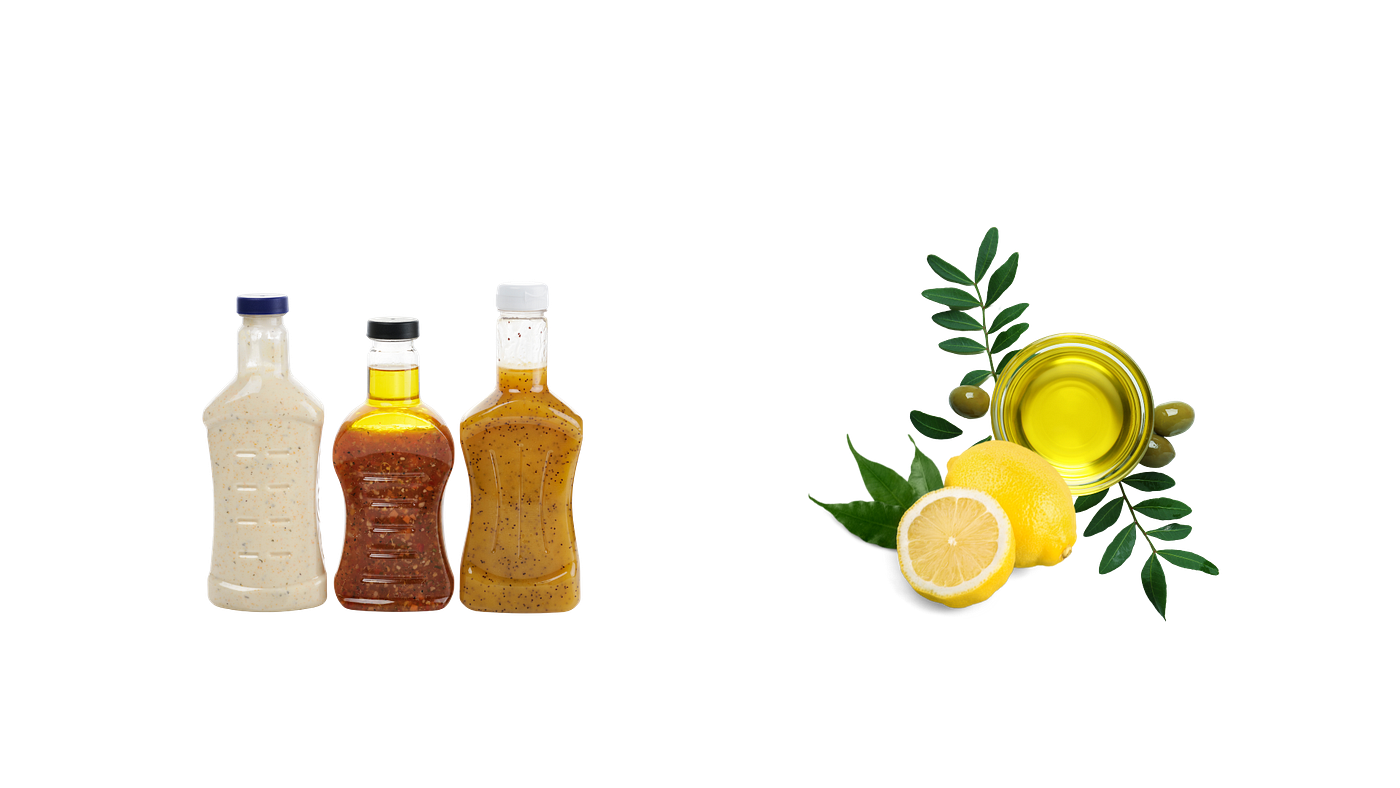
The Hidden Calorie Bomb
Salad dressing was the hidden calorie bomb in my otherwise healthy meals. I was proud of eating large salads regularly, but I was unknowingly adding 200–300 calories of processed dressing to each bowl. Most commercial salad dressings contain:
- High amounts of added sugar
- Processed vegetable oils
- Preservatives and artificial flavors
- 100–150 calories per 2-tablespoon serving
- Trans fats (in some varieties)
Even “light” or “low-fat” dressings often compensate for reduced fat with increased sugar and artificial ingredients.
The Simple, Clean Solution
My homemade dressing couldn’t be simpler: fresh lemon juice, extra virgin olive oil, salt, and pepper. This combination provides:
- Healthy fats: Olive oil contains monounsaturated fats that support heart health
- Vitamin C: Fresh lemon juice provides immune-supporting vitamin C
- Antioxidants: Both lemon and olive oil contain beneficial antioxidants
- Flavor enhancement: Natural ingredients that enhance rather than mask food flavors
- Cost savings: Significantly less expensive than bottled dressings
The healthy fats in olive oil also help your body absorb fat-soluble vitamins (A, D, E, and K) from the vegetables in your salad, making your meal more nutritious overall.
The Results: How These Swaps Transformed My Body
After implementing these five swaps consistently for 30 days, I experienced remarkable changes:
Weight Loss: I lost 5kg without feeling deprived or hungry
Energy Levels: Stable energy throughout the day without afternoon crashes
Cravings: Reduced sugar cravings and better appetite control
Digestion: Improved digestive health and less bloating
Mood: More stable mood and better mental clarity
Sleep: Better sleep quality and easier morning wake-ups
The most surprising aspect was how easy these changes were to maintain. Unlike restrictive diets that left me feeling deprived, these swaps actually improved my satisfaction with meals while supporting my weight loss goals.
Why These Swaps Work: The Science Behind Success
These food swaps work because they address the fundamental principles of sustainable weight loss:
Caloric Density: Each swap reduces calories while maintaining or increasing volume and satisfaction.
Protein Optimization: Higher protein intake supports muscle maintenance, increases metabolism, and promotes satiety.
Blood Sugar Stability: Reducing processed sugars and increasing fiber helps maintain stable blood sugar levels, reducing cravings and energy crashes.
Nutrient Density: Whole foods provide more vitamins, minerals, and antioxidants per calorie than processed alternatives.
Satiety Factors: The combination of protein, fiber, and healthy fats in these swaps promotes feelings of fullness and satisfaction.
Implementing These Swaps in Your Life
Start Gradually
Don’t try to implement all five swaps at once. Choose one or two that seem most manageable and focus on those for a week before adding others.
Meal Prep for Success
Prepare components in advance:
- Hard-boil a dozen eggs on Sunday
- Wash and cut vegetables for easy snacking
- Pre-mix your lemon and olive oil dressing
Listen to Your Body
Pay attention to how these changes affect your energy, hunger, and cravings. Most people notice improvements within the first week.
Be Patient with Taste Adaptation
Your taste buds may need time to adjust, especially if you’re used to very sweet or heavily processed foods. Give yourself 2–3 weeks to fully appreciate the natural flavors.
Taking It Further: Your Complete Clean Eating Transformation
These five swaps are just the beginning of what’s possible when you align your food choices with your health goals. In my 30-Day Clean Eating Plan, I share over 100 similar swaps and provide:
- Complete meal plans for 30 days
- Weekly grocery shopping lists
- Meal prep guides and strategies
- Recipe collections for every meal
- Troubleshooting guides for common challenges
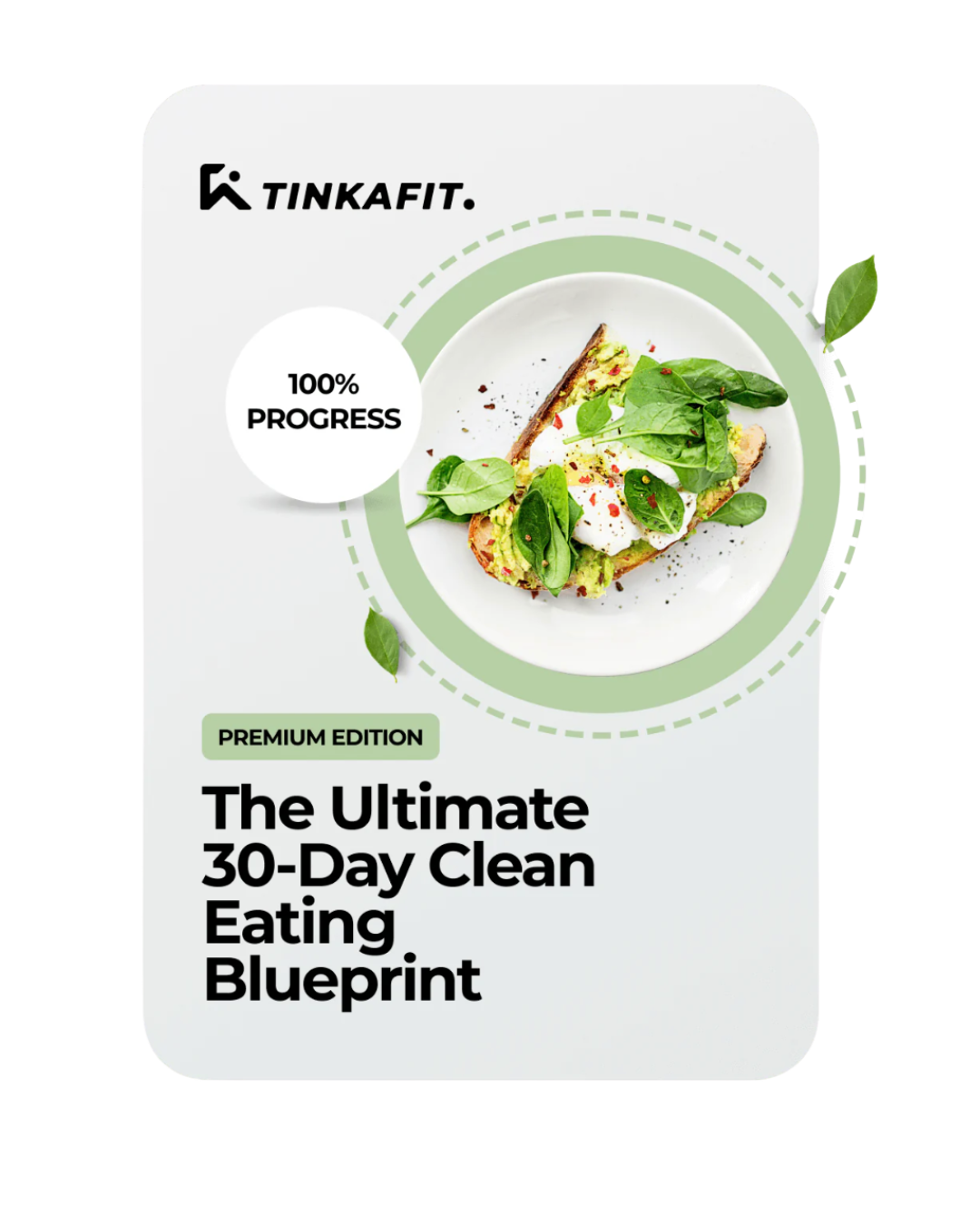
The plan is designed for busy people who want real results without complicated rules or extreme restrictions. Every recipe and meal plan is tested and optimized for both nutrition and taste.
Ready to transform your eating habits? Get the complete 30-Day Clean Eating Plan here and start seeing results in just days.
Your Next Steps
- Choose one swap to implement this week
- Track your results — notice changes in energy, hunger, and cravings
- Add another swap once the first becomes habit
- Share your experience — comment below with which swap you’re trying first
Remember, sustainable weight loss isn’t about perfection — it’s about making consistently better choices that support your goals. These five swaps prove that small changes can create significant results when applied consistently.
Which swap will you try first? I’d love to hear about your experience in the comments below!
About the Author: Tina Ka is a fitness trainer and nutrition expert who helps busy women achieve their health goals through sustainable lifestyle changes. Follow her journey on Instagram @tinakafitness and YouTube for daily motivation and practical tips.
